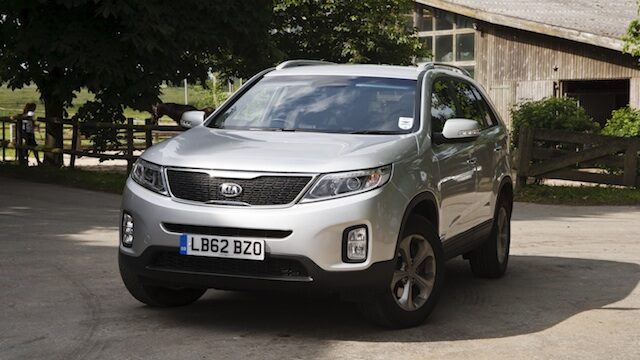A week with a car can tell you a lot, but a Continental adventure along motorways, country roads, back roads and a bit of farming speaks volumes.
I regularly cover the Le Mans 24hrs race and thought this year’s event would be a good test for the Kia Sorento I have booked some weeks before through the ever helpful Carly Escrit.
With two adults comfortably seated and a full load of gear, the journey commenced at 02h00 allowing enough time to collect en route one adult in Cardiff and another in Bournemouth, to make the crossing from Dover to France.
The first leg of the journey, while longer than normal time wise, was completed in total comfort thanks to the wide front seats and ample room in the rear made even more pleasant by the adjustable reclining feature on the rear seats.
Driving for such long spells was not as tedious as one might expect as Kia have really sorted the interior cabin layout to be as convenient as possible with all the facilities such centre console storage (ample) and door bins for water bottles.
The boot space was more than adequate as we were by now loaded up with four sets of luggage including sleeping gear and camera equipment, required for a later purpose.
Most drivers will know that before travelling in Europe one has to fit the obligatory beam converters, those awkward adhesive stickers that must be placed on the headlight lenses prior to departure.
Now the Kia Sorento has Euro-legal anti-dazzle light beams that are acceptable in both the UK and in Europe, so hey presto, no more sticky beam benders!
The Sorento’s engine, a 194 bhp 2.2 CRDi driven through a 6-speed manual gearbox, was silky smooth and did not miss a beat throughout the journey. Its not a firecracker unit, but has plenty of mid-range torque and we returned an average of 43.5 mpg over the whole journey, better than the manufacturer’s estimate.
The Le Mans 24-Hour race is the main motorsport event on my calendar and one needs to be there for the whole week in order to conduct interviews, attend press conferences and to observe, photograph and report on the practice and qualifying sessions on both Wednesday and Thursday evenings.
The Le Mans spectacle is no cakewalk due to the distances that must be covered on foot at the race.

The back of a Sorento with seats folded flat makes about the most comfortable resting place imaginable for a few hours, especially when a thin camping mattress is used. An adult can stretch out easily in this space and with the rear privacy glass nobody was any the wiser (left). I awoke to find I was surrounded by motor cars and campers occupied by journalists doing exactly the same thing. Showers are nearby, and food stalls are scattered through the circuit complex, so if you can bear a few nights of ‘roughing it’, then this is the way to go. Sleeping within the circuit complex really gets you in the swing of things.
Friday at Le Mans is traditionally a quiet day in that there is no track action and so the day is taken up with press conferences and ‘meet the team’ invitations where you can interview drivers and team managers, providing essential meat for your features.
You usually try to get a little extra shut-eye on Friday night as you have had a week of very long days so far and it would get a whole lot more intense with the start of the race at 15h00 on Saturday. Race day dawned with a different, more expectant atmosphere, as everybody was rushing about with intent.
The intensity of the day ramps up towards noon and as the countdown to the start begins, you begin to draw on those adrenalin reserves.
The race has its own demands on your energy depending on what you are doing at the race, but as a photographer and journalist, I find myself trying to cover everything which really is a drain. A journey out to the Mulsanne Straight in one of the media shuttle buses can take the best part of three hours for just an hour spent at the trackside.
One spends a lot of time walking up and down the pit lane and on the outside of the track, from the Ferris wheel right around to Tertre Rouge and as one photographer calculated, she walked around ten miles a day carrying cumbersome photographic gear, including up and down three flights of stairs to media centre above the pit complex countless times a day.
By the time you have snatched a few winks during the dead of night between Saturday and Sunday, you are ready for home when the end of the race comes.
The race finishes at 15h00 on Sunday, so you aim to leave the car park at around 18h00-19h00 allowing enough time for everyone else to leave first, and you make your way slowly towards the coast, and your ferry.
The return ferry crossing was with Brittany Ferries from Caen to Portsmouth, a 125 mile, 5½ hours sailing which if you opt for a cabin, offers one the opportunity to relax, shower and begin to feel human again. The crossing is a comfortable one with all the conveniences and facilities such as movies and all the eateries you could wish for.
The driving distance from Le Mans back to West Wales is 325 miles and despite an exhausting week at Le Mans, this final leg was accomplished in comfort.
I can say without any doubt, that the Sorento has truly impressed me.

© Images courtesy of VirtualMotorpix

